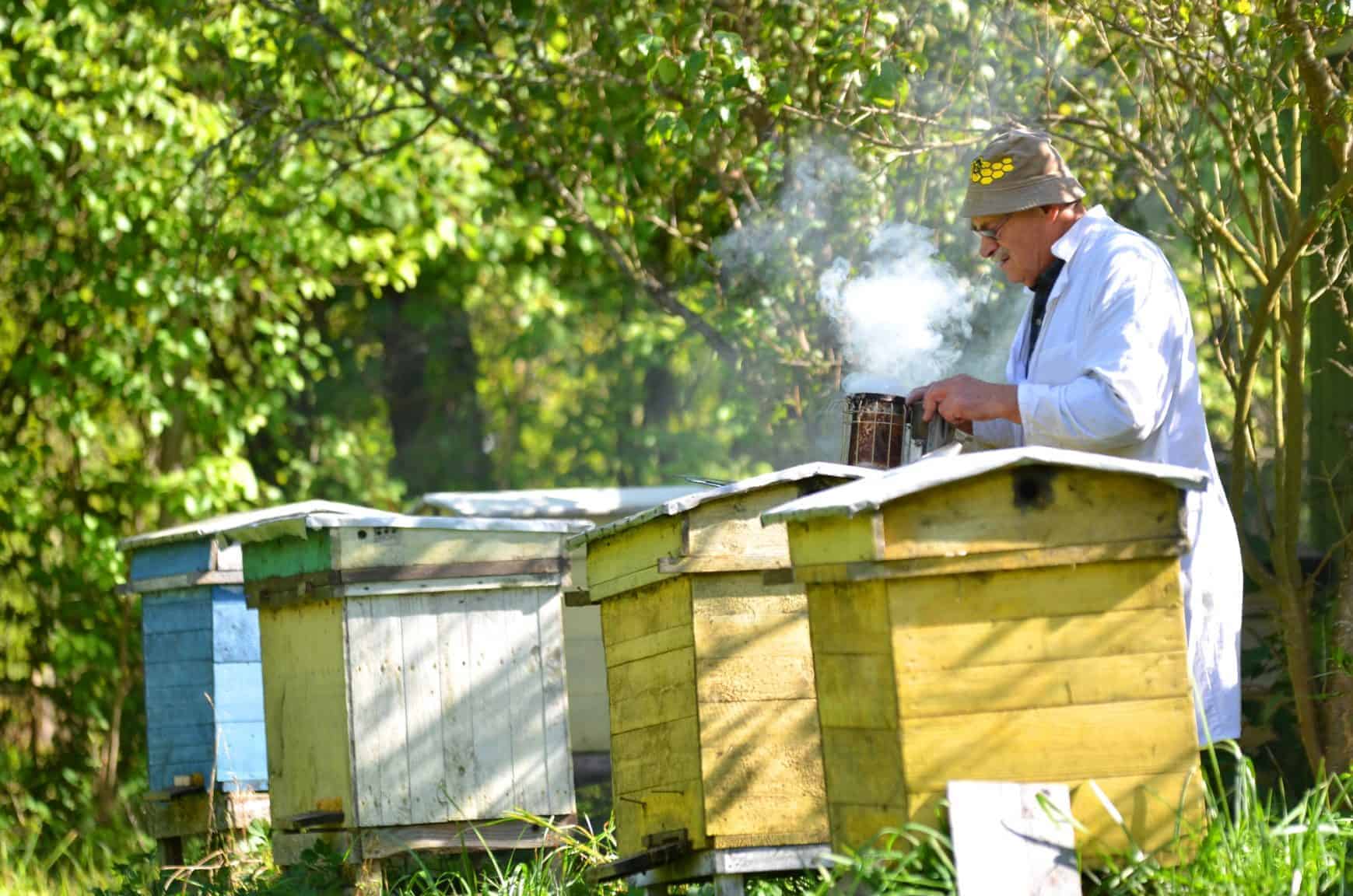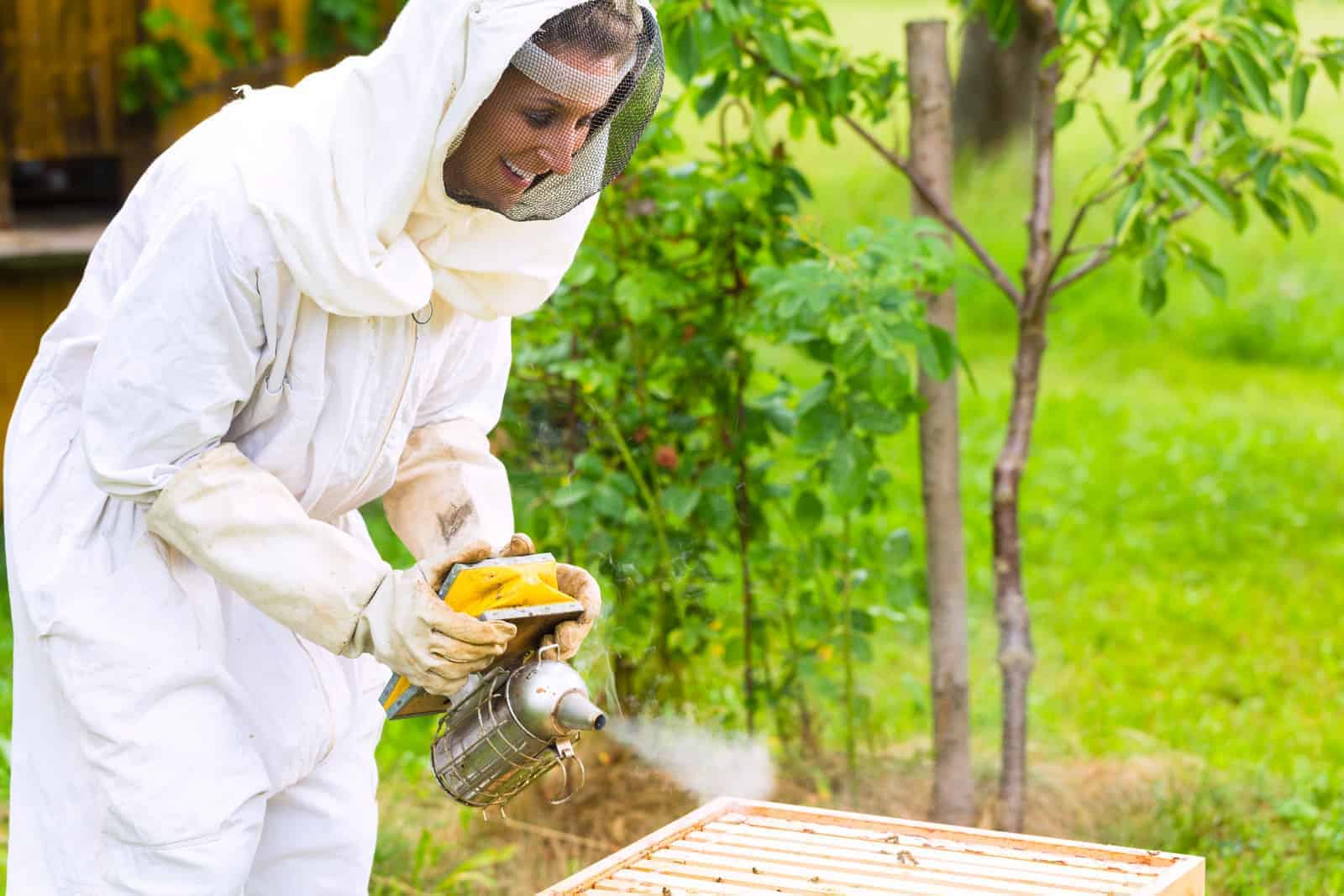Introduction
Stage 2 of our course, Your Beehive, covered three sections:
- Beehives and Accessories
- Equipment and Clothing
- Starting Your Beehive.
Augmenting our content in Stage 1 : Learn About Bees, these sections introduced you to the practical aspects of beekeeping.
Below we summarize what we covered in Stage 2 : Your Beehive. These articles introduced you to the common components of all beehives, with an emphasis on why they are each important to bees. Then we covered the various types of beehives commonly available today, including Flow Hive.
Next we looked at the tools, equipment and protective clothing you will need. Finally, we walked through the fun process of setting up your first beehive and bees!
Let’s look at each section in more detail.
Section 2.1 : Beehives and Accessories
Many elements of beehive design have been with us for hundreds of years. The basic principles apply as well today as they ever did.
- It is important to understand the reasoning behind the design of any beehive. Therefore, our first consideration was What Bees Need.
- Although our primary thoughts should be around the bees, we do need to consider the needs of the humble beekeeper, which we covered in What Beekeepers Need.
- We start our look at beehives, with an introduction to the Langstroth, Warre and Top Bar hives.
- In the first of our detailed articles, we look at the traditional, iconic Langstroth hive.
- Then we covered the beehive modeled on the type of sites bees choose naturally, namely the Warre.
- And finally we investigate the most human-friendly and convenient of the beehives, the Top Bar beehive.
- The question of foundation vs. foundationless frames was the focus of our next article.
- We closed out this section with one of the most controversial inventions in beekeeping, the Flow Hive.
Section 2.2 : Equipment and Clothing
Having looked at beehives, our next section investigated the various tools and pieces of equipment you need, along with the important topic of protective clothing
- We looked at some of the practical details you should consider when setting up your beehive.
- The importance and use of the smoker was discussed.
- Then we covered when it is important to help your bees with a feeder.
- We then walked through a number of other tools the beekeeper should consider, such as the hive tool.
- Then is was all about protecting yourself, in our overview of protective clothing.
- Finally, we took a brief tour of some of the important developments from the application of technology in beekeeping.
Section 2.3 : Starting Your Beehive
Our final section covered the awesome event of setting up your first beehive!
- We started out with 11 questions you should answer before you start beekeeping!
- Having decided on your choice of beehive, there are some important steps to make as you setup and install your hive.
- Then we got to the fun part, with an overview of the ways in which you can obtain your bees.
- The first and probably most common way for a new beekeeper to obtain bees is with a package of bees.
- Also popular is the use of a nucleus colony (nuc)
- Finally, we looked at how to capture and install a swarm of bees.
- With your beehive set up and bees a-buzzing, we looked at some practical details all beekeepers should consider.
- Then we looked at putting that feeder to good use, in our introduction to feeding bees.
- With so many opinions in beekeeping, we looked at some contrarian positions that may, in fact, make good sense for the new beekeeper.
- Involving others in beekeeping has its merits, so we looked at how to involve family and friends.
- One of the most important skills for a beekeeper is knowing how to interpret the brood nest, which we covered in our introductory article.
- With a hive up and running, it’s important for the beekeeper to have a plan for tracking progress and keeping records.
- Next we looked at some excellent organizations associated with beekeeping advocacy, some of which the new beekeeper should consider.
- The beehive inspection is the essential time at which the beekeeper investigates what is happening in the beehive.
- Finally, we uncovered a number of myths that the beekeeper should be careful to avoid.
And with that, we conclude Stage 2 : Your Beehive, which sets you up well for our final, important stage – A Healthy Beehive.



